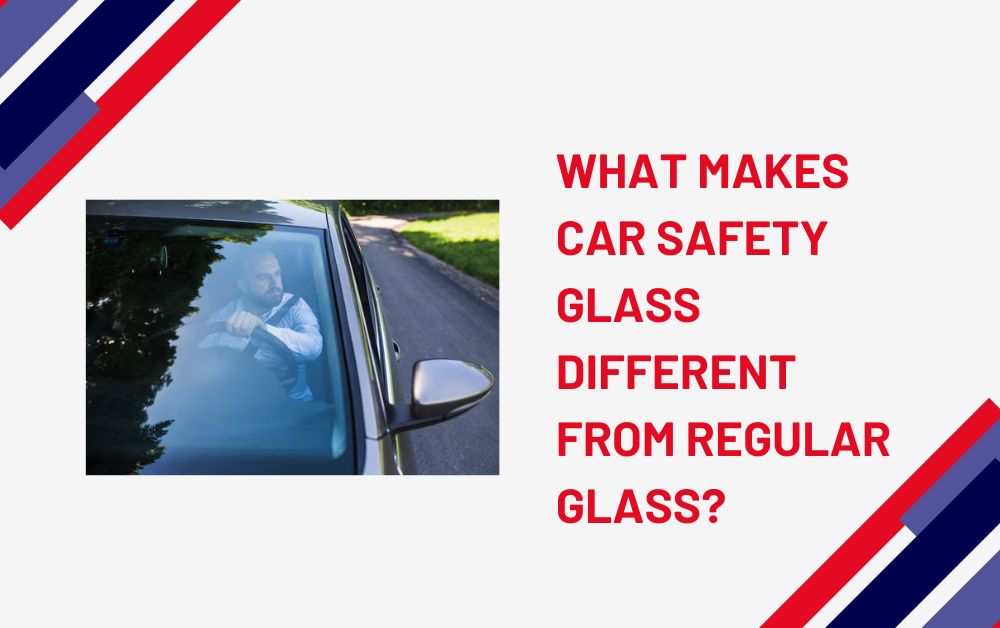When it comes to car safety, every component of a vehicle plays a crucial role, but few are as vital as the type of glass used. Car safety glass is specifically engineered for use in vehicles and differs significantly from the regular glass you might find in your home windows. This specially designed glass is made to protect passengers in a variety of situations, from accidents to break-ins. In this blog, we’ll explore what makes car safety glass different, how it’s made, and why it’s such an important part of modern vehicle safety.
Types of Car Safety Glass
Car safety glass comes in two main types: laminated glass and tempered glass. Each serves distinct roles within the vehicle and offers unique benefits.
Laminated Glass
Composition and Function
Laminated glass is typically used for car windshields. It consists of two layers of glass with a thin layer of vinyl in between. This structure is designed to hold the glass pieces together if the glass is shattered, preventing sharp pieces from causing injury to passengers.
Benefits of Laminated Glass
- Prevents Ejection: In a crash, laminated glass can help prevent passengers from being ejected through the windshield.
- Blocks UV Rays: Laminated glass filters out harmful UV rays, protecting both the passengers and the interior of the car from sun damage.
Tempered Glass
Composition and Function
Tempered glass is stronger than regular glass and is used for side and rear windows in cars. It’s made by heating the glass to a very high temperature and then cooling it rapidly. This process makes it much tougher than normal glass.
Benefits of Tempered Glass
- Safety Breakage: If broken, tempered glass shatters into small, blunt pieces that are less likely to cause injury.
- Quick Escape: In emergencies, the ability to shatter completely allows passengers to quickly escape through a broken window.
How Car Safety Glass is Made
The manufacturing processes for laminated and tempered glass involve high-tech procedures that enhance their durability and safety features.
Making Laminated Glass
The Layering Process
Laminated glass is made by sandwiching a layer of polyvinyl butyral (PVB) between two layers of glass. The glass and PVB are then bonded together through a process involving heat and pressure, which ensures the layers adhere tightly and without bubbles.
Making Tempered Glass
Heating and Cooling
Tempered glass is crafted by heating regular glass to about 600 degrees Celsius and then rapidly cooling it. This tempering process introduces stress layers within the glass, which greatly increase its strength and impact resistance.
Why Car Safety Glass Is Different from Regular Glass
Car safety glass is specifically designed to meet the demanding safety requirements of the automotive industry, which regular glass cannot fulfill.
Enhanced Safety Features
Injury Prevention
Both types of car safety glass are designed to reduce the likelihood of injury. Laminated glass remains intact upon impact, while tempered glass breaks in a way that minimizes harm.
Durability and Strength
The processes used to make car safety glass make it much stronger and more durable than regular glass, which is essential for the harsh environments that vehicles often face.
The Importance of Car Safety Glass
The use of safety glass in vehicles is critical not just for the protection it provides in accidents, but also for the overall structural integrity and performance of the vehicle.

Protecting Passengers
The primary function of car safety glass is to protect passengers during accidents by preventing sharp injuries and ejections, which are major risks with regular glass.
Legal and Safety Standards
In many regions, the use of safety glass in vehicles is required by law. These standards ensure that all vehicles provide a basic level of protection for passengers.
Innovations in Car Safety Glass
Advancements in automotive glass technology continue to improve passenger safety.
Improved PVB Layers
New formulations of PVB are being developed to offer even greater resistance to impacts and better protection from UV rays.
Smart Glass Technologies
Developments in smart glass technologies allow for windows that can change their tint based on the intensity of sunlight or improve visibility in different weather conditions, enhancing both comfort and safety.
Conclusion
Car safety glass is a vital component of vehicle safety that goes largely unnoticed until it’s needed. Its unique properties — from impact resistance to UV protection — make it a far superior choice for vehicles compared to regular glass. Understanding the differences between these types of glass and their benefits not only highlights the importance of automotive safety but also the technology and research that go into protecting vehicle occupants every day. Whether it’s preventing injuries during an accident or ensuring a quick exit from the vehicle in an emergency, car safety glass plays a fundamental role in modern automotive design, making it an indispensable part of every vehicle.
Note:- To read more articles visit on insighthubster.
